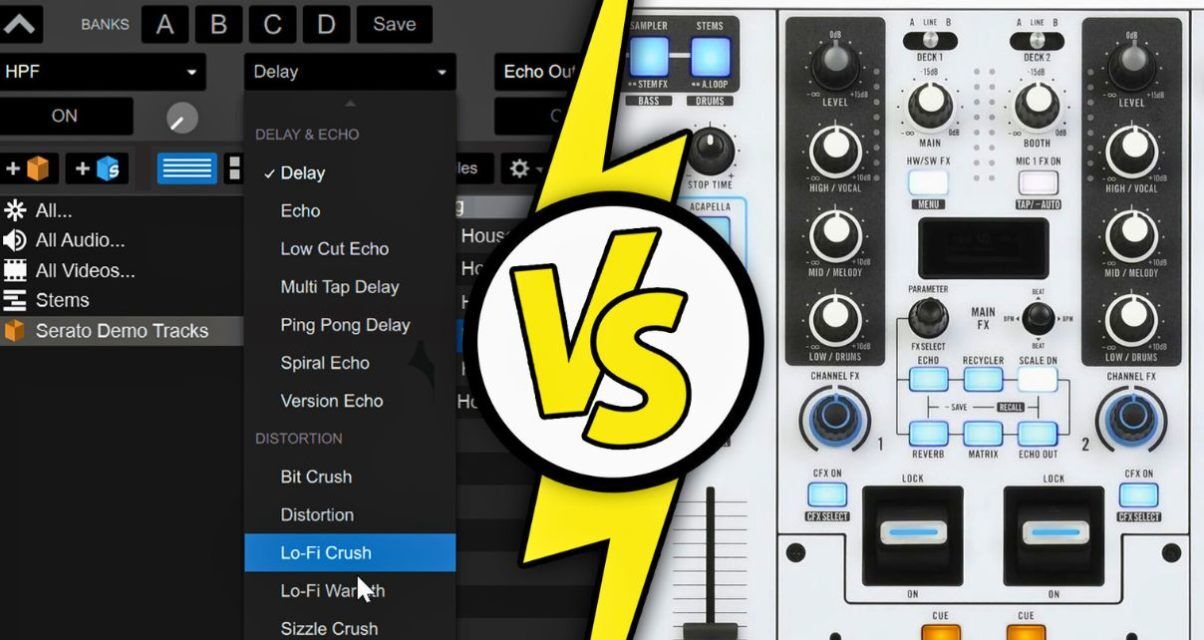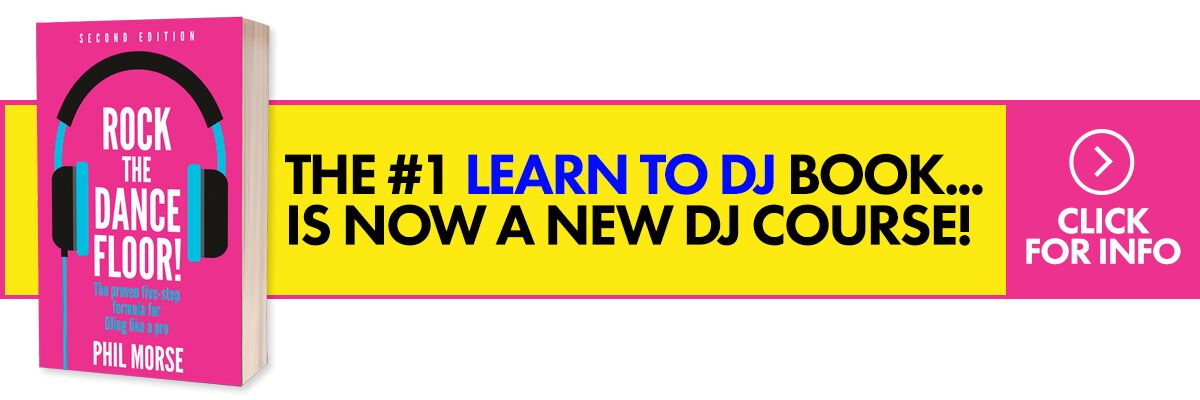When you’re building your DJ set-up, one question often comes up: should you use hardware or software effects? The answer depends on how you DJ, what gear you’re using, and what you want to achieve. Let’s break down the differences and help you work out what’s right for you.
However, before we get into it…what are effects? Effects are tools that change sound in real-time during your DJ set. Common examples include echo, reverb, filters, flangers, and delays. You use them to enhance transitions between tracks and add creative elements to your performance.
Hardware vs software FX
Hardware effects are physical effects processors with dedicated knobs, buttons, and faders. They’re built into DJ mixers (Pioneer DJM series, Allen & Heath Xone) or controllers (Rane One MkII). You can also use external units like Kaoss Pads, guitar pedals, or vintage analogue gear. Hardware effects process any audio signal passing through them.
Software effects are built into DJ software like Serato, Traktor, Rekordbox, and VirtualDJ. You control them via mapped buttons and knobs on your controller (or through the software screen). Software effects process only the audio playing through the DJ software, though Traktor is an exception here, as it can process external inputs.
Watch the show
Prefer me to talk you through this? In this video, a recording of a live show from the Digital DJ Tips YouTube channel, I talk you through everything in this article, and we take questions from our community on the subject.
Hardware effects: the pros and cons
Hardware gives you complete control over effect parameters through physical knobs and buttons, with no screen required. It works with any source – you can process turntables, CDJs, samplers, or any external gear plugged into the mixer. External hardware like guitar pedals and vintage units create signature sounds you can’t get in software.
However, dedicated hardware effects units cost extra money beyond your core set-up. They also take up physical space in your DJ booth.
Software effects: the pros and cons
Software gives you 20-50+ effects included with your DJ software at no extra cost. There’s no additional equipment to carry beyond your laptop and controller.
However, mapped buttons on your controller usually provide simplified control over basic parameters only. To access full effect parameters, you need to look at and interact with your laptop. Also, software effects can’t process external analogue gear (again, Traktor is the exception).
The hybrid approach
High-end controllers like the Rane One MkII and Pioneer DJ DDJ-REV7 combine both approaches. They feature built-in hardware effects alongside software integration, and function as standalone mixers with analogue inputs for turntables, CDJs, and external gear.
The hardware effects work on both software decks and external sources. You get complete parameter control via physical controls plus access to an extensive software effects library. It’s the best of both worlds: hardware reliability and tactile control with software variety and flexibility.
Which Is Right For You?
If you’re a controller DJ using only software sources, software effects are enough – though be aware you’ll usually need to use the laptop screen for detailed parameter control. If you’re mixing external gear with software, hardware effects are essential (unless you’re using Traktor).
DJ like a pro using ANY gear: The Complete DJ Course
Want a unique sound? External hardware effects like guitar pedals and vintage units offer sonic character unavailable in software. And remember, software effects are included with your DJ software, while dedicated hardware effects cost extra.
Most importantly, work out what fits your workflow. If you prefer hands-on control without screen-watching, hardware effects are your friend. If you want variety without extra gear, software effects have you covered.
Hardware, software, or hybrid: which do you prefer? Let us know in the comments!


